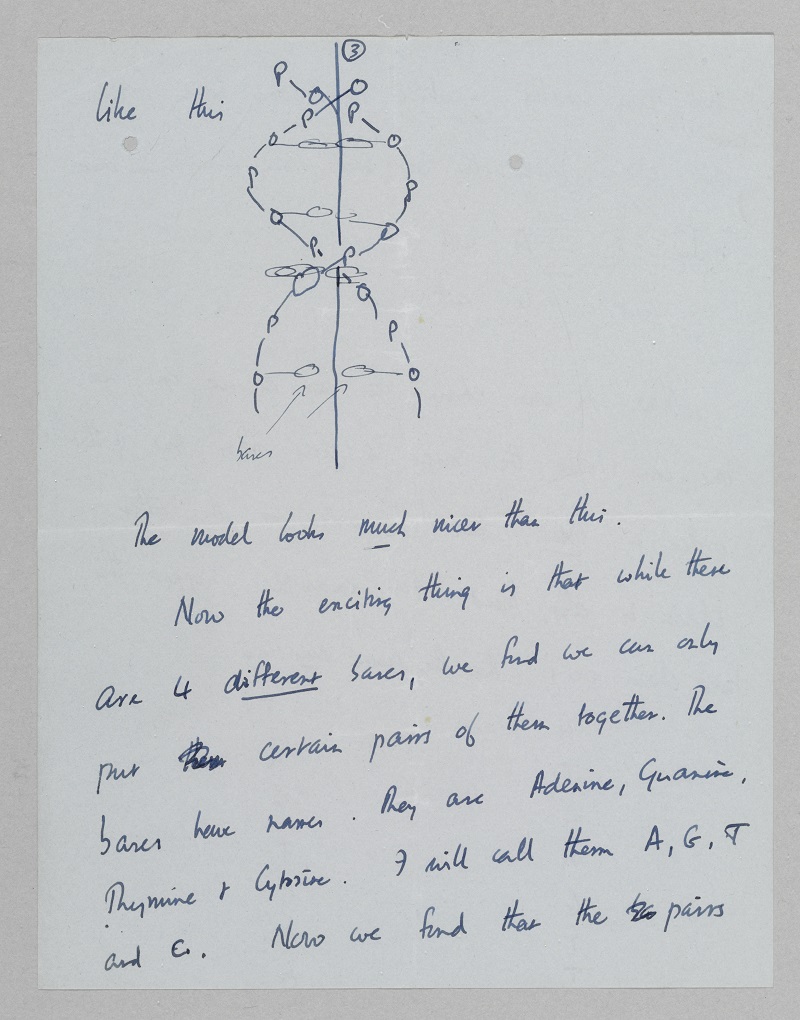Francis Crick Letter to Son May Fetch $2 Million in Auction

"Jim Watson and I have probably made a most important discovery."
That's the humble start to the seven-page handwritten letter — signed "lots of love, Daddy" — written by British scientist Francis Crick to his 12-year-old son on March 19, 1953, explaining that he and James Watson had unraveled the double-helix structure of DNA that contains the instructions for life.
Those pages and, separately, the Nobel medal Crick was awarded for the discovery almost a decade later, are among the Crick-related mementos up for auction this week in New York. The items are set to fetch hundreds of thousands of dollars, if not millions, much of which will go toward science.
The letter, valued at $1-2 million, will be sold by Christie's on Wednesday (April 10) at 1:30 p.m. ET. It was a tricky item to appraise because Christie's has had few precedents in terms of 20th-century documents that are this important in the history of science, explained Francis Wahlgren, international head of rare books and manuscripts for the auction house. [See Images of the Francis Crick Letter]
Wahlgren told LiveScience the Crick letter was considered comparable to a letter Albert Einstein wrote to President Franklin D. Roosevelt, warning about the potential of nuclear weapons. Christie's sold that letter in 2002 for just over $2 million. Wahlgren added that several buyers, mostly private, have expressed interest in the Crick letter.
Written in blue ink on pale blue stationary, the note contains diagrams that outline the scientists' theory of how "des-oxy-ribose-nucleic-acid (read it carefully)" replicated, with the double helix and its base-pair rungs splitting to create templates for new strands.
"In other words we think we have found the basic copying mechanism by which life comes from life," Crick wrote to his son, Michael, who was at a boarding school at the time.
Get the world’s most fascinating discoveries delivered straight to your inbox.
As legend has it, when Watson and Crick made their discovery on Feb. 28, 1953, Crick announced inside a local Cambridge pub called the Eagle, "We have discovered the secret of life." Their findings wouldn't be published in the journal Nature until two months later, and the note to Michael is likely one of the first written explanations of the discovery.
"As far as we know this is the first public description of these ideas that have become the keystone of molecular biology and which have spawned a whole new industry and generations of follow on discovery," Michael Crick wrote in Christie's catalogue.
Half of the proceeds from the sale of the "secret of life" letter will go to benefit the Salk Institute in California, where Francis Crick studied consciousness later in his career.
The Christie's auction will also include one of Crick's notebooks, expected to sell for $4,000-$6,000, and a drawing of Crick made by his wife, Odile Crick, an artist who drew the double helix for her husband and Watson, which could go for $8,000-$12,000.
Meanwhile, on Thursday (April 11) Heritage Auctions will sell the Nobel medal, struck in 23-carat gold, that Crick received in 1962, alongside Watson and Maurice Wilkins.
Heritage has valued the medal and diploma at $500,000. As of Tuesday evening, the bid on the items was at $280,000. That auction will also include Crick's award check with his endorsement on the back, the scientist's lab coat, his gardening logs, nautical journals and books.
Follow Megan Gannon on Twitter and Google+. Follow us @livescience, Facebook& Google+. Original article on LiveScience.com.



